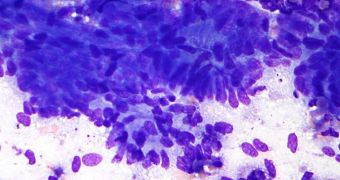According to the conclusions of a new study, it would appear that surviving cancer during childhood comes with a variety of ill side-effects, including disfigurement, persistent hair loss and long-term emotional distress throughout adulthood.
Though each survivor is affected differently, these conditions are very likely to develop in these individuals, at least to some extent. In the new study, the former cancer patients were compared to their siblings, researchers say.
The work revealed that the former had a lot more scars on their arms, legs and head, and that their limbs were more likely to be disfigured. Overall, this led to a reduced quality of life, and to an increased risk of developing depression.
Scientists with the Northwestern University Robert H. Lurie Cancer Center say that their research was not meant to suggest that surviving cancer as a child is life-threatening in itself. They are merely pointing out that doctors need to become more aware of the outcomes these people are in for.
“I think it showed us these aren’t necessarily life-threatening late effects of cancer […] but certainly we need to be more aware of the outcomes these patients are dealing with,” explains the coordinator of the RLCC STAR Survivorship Program, Karen Kinahan.
Working together with her team, the investigator analyzed data on 14,358 children who suffered from cancer, and 4,023 of their siblings. Leukemia, lymphoma and kidney cancers were the most common forms of the condition affecting these children.
People in this group were treated for cancer between 1970 and 1987, when all of them were younger than 21. They were asked to fill out a questionnaire when they enrolled in this investigation, and again in 2003, PsychCentral reports.
Around 25 percent of cancer survivors were found to display scars on their bodies, as opposed to just 8 percent of their siblings. The arms, legs, chest and stomach were the most severely affected areas.
Children’s Healthcare of Atlanta pediatric oncologist, Dr. Karen Wasilewski-Masker, says that radiotherapy tends to affect developing children more than it does adults. This means that irradiated areas of the body tend not to grow normally.
“We need to be aware of the possibility of some psychosocial problems in patients that have some type of disfigurement, […] but we also need to not assume that just because a person may look different because of a cancer treatment that it’s impacting them in a negative way,” Wasilewski-Masker concludes.
The new investigation is detailed in the latest issue of the esteemed Journal of Clinical Oncology.

 14 DAY TRIAL //
14 DAY TRIAL //